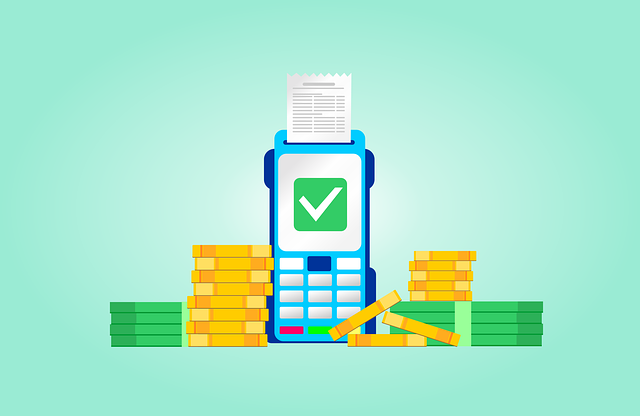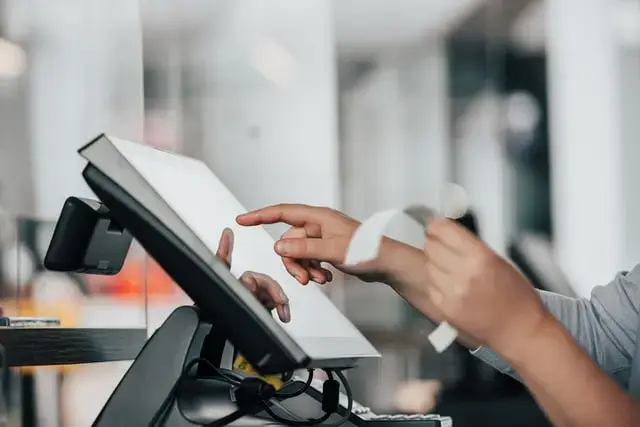Introduction
There’s no doubt that paper is one of Asia’s greatest inventions. Wars were fought, and kingdoms were burnt to the ground just to learn the paper-making process. Fast forward about 2000 years; even today, paper is an integral part of the digital world. Likewise, paper receipts are still a vital part of many businesses.
But things are slowly changing in the post-pandemic world. Paper and paper receipts are rapidly losing their importance. The COVID-19 pandemic forced many businesses to switch to electronic receipts and has accelerated the growth of e-receipts. Many organizations have moved to electronic receipts, and others are still transitioning.
The Digital Receipts market size is estimated to reach $2.3 billion by 2027, growing at a CAGR of 7.5% during the forecast period 2022-2027. The market growth is due to increasing adoption of retail shopping applications & websites, increasing use of food purchase applications, rising penetration of online payment and delivery options and so on to rising preferences for online shopping, growing use of electronic receipts in retails industries and so on.
Are you looking to switch to electronic receipts or e-receipts? Would you like to know everything about it? Don’t fret – we have done all the legwork for you. Here’s all you need to know about electronic receipts. Read on to know more.
What is an E-Receipt?
E-receipts, also known as electronic receipts, are proof of payment issued through a digital method – via email or text message – instead of physically giving the receipt. Many countries have ditched physical receipts and started accepting electronic receipts as proof of purchase and tax returns.
How do Electronic Receipts work?
After the purchase, the merchant asks the customer if they want electronic or physical receipts during the checkout. If the customer opts for electronic receipts, the merchant takes his email address or phone number and sends the e-receipt.
Also read: 7 reasons to automate your expense management

Suggested Readings: Invoice Vs Receipt: Importance, Differences, and Components
Benefits of Using E-Receipts
Here are some of the significant benefits of using electronic receipts:
It helps you save a ton of money
What amount of money do you spend every month on thermal paper rolls? It could be negligible, but think of the total expense for the year. Does the number look huge? Also, add the money you will be spending on ink and printer. You could save all this money and invest it in more important things by merely switching to electronic receipts.
It is easy to store
Storing physical receipts is a gruesome task. To safeguard them, you will have to store the receipts in a safe place manually. But, despite all this, the chances of receipts getting lost or ink from the receipt fading are pretty high. However, in the case of electronic receipts, you do not have to worry about protecting the receipts; they will be safe in your email.
They are an eco-friendly option
According to the IBM Institute of Business Value Reports, consumers are moving towards more sustainable brands. Electronic receipts are a great sustainable option. It can help you save a ton of paper. Also, being eco-friendly and environmentally aware can make your brand look more responsible.
Contactless experience
Customers are switching to contactless payment and shopping experiences in this post-pandemic era. If you are looking for a contactless and safe purchase experience, using e-receipts is the way to go.
It helps you in marketing
To send the e-receipts to the customers, the company needs to collect their email IDs, which can be used for marketing purposes. On the other hand, in organizations that offer physical receipts, generating an email list is an arduous task.
It provides you with better customer metrics
E-receipts offer you a better understanding of your customers. Also, e-receipts give you vital customer metrics that can be used to the firm’s advantage.
How to Store E-Receipts?
Here’s how you can store e-receipts and use them in time of tax season:
- You can choose the DIY approach. Take a picture of the receipt or the bill on your smartphone, convert it to PDF, and store it in Google Drive or other online storage spaces
- The second option is automating your receipt management using receipt management software
Now that we have covered benefits, let us look at some challenges in using e-receipts
Challenges of using E-Receipts

Technical know-how
While digital receipts offer convenience, a hurdle lies in the requirement of technical knowledge for retailers and customers. Understanding the intricacies of receipt software is crucial for retailers, from sending receipts to specific customers to leveraging analytics. On the customer side, active email management is essential, introducing potential challenges for those less adept at navigating digital interfaces.
Oversight
Digital receipts streamline processes, yet they come with the risk of being easily overlooked or neglected. Retailers may manage their copies diligently, but customers might not be as vigilant. With many individuals skimming through non-work-related emails, digital receipts could be neglected, especially when customers frequently delete emails. This oversight can lead to difficulties in financial tracking and managing accounting operations.
Data Security
The online realm poses inherent risks, and digital receipts are not exempt. Hackers can compromise the system despite their safety measures, putting customer data at risk. The consequences of such a breach extend beyond privacy concerns, impacting both customers and retailers. Retailers may grapple with significant data loss and operational challenges in a compromised system without adequate backups.
We have seen the pros and cons of using e-receipts. However, do electronic receipts suit all businesses?
Do Electronic receipts suit all businesses?
Retail Giants and E-Commerce Empires
For retail giants and e-commerce empires, e-receipts often seamlessly integrate into their operational framework. The high volume of transactions and the digital-savvy nature of their customer base make e-receipts an efficient and eco-friendly choice. These businesses can harness the benefits of data analytics embedded in e-receipts to understand customer behavior and preferences.
Small and Local Businesses
On the other end of the spectrum, small and local businesses may face different considerations. Adopting e-receipts depends on the tech readiness of the business and its clientele. Some local establishments may find traditional receipts more accessible and in tune with their customer base, especially if digital literacy is not widespread.
Service-Oriented Ventures
Service-oriented businesses, such as consulting firms or freelance professionals, often deal with intangible products. E-receipts, with their swift delivery and storage in digital formats, align well with these ventures. However, it is crucial to ensure that clients are comfortable with this shift and that it complies with industry regulations.
Businesses must assess their technological readiness, customer demographics, and environmental priorities to determine whether e-receipts align with their operational goals. While e-receipts offer undeniable advantages, a tailored approach is essential to ensure seamless integration across diverse business models.
Key Takeaways
Covid-19 has forever changed our world and how it operates. The same applies to enterprises globally and how they do business. The pandemic has clearly shown us that electronic receipts are here to stay. In fact, e-receipts are the future of business transactions. It is time you understand that and jump on the bandwagon.
Want to know more about expense reports? Check out our comprehensive guide to creating an expense report.
Electronic Receipts – Frequently Asked Questions
What is the meaning of electronic receipt?
An electronic or e-receipt is a proof of purchase given to customers. The e-receipt is sent directly to the customer’s email ID or mobile as a text message.
How can you get a digital receipt?
You can give the merchant your email address or phone number while making a purchase and receive the digital receipt in your email ID or as a text message.
Why are digital receipts better?
Digital receipts are much better than physical receipts. Here are some of the reasons:
- It’s easy to store
- You can save paper, money, and time
- Merchants can use it to understand the product preferences of their customers
- Use it to create an email list and contact customers better
Is a receipt a document?
Yes. A receipt is a document the seller or merchant provides to their customers as proof of purchase. The receipt is offered when the seller receives the payment.
Can I use digital receipts for tax?
Yes. Many countries accept the submission of digital receipts for tax processes. However, it’s always best to confirm with the necessary authorities and follow the guidelines regarding using digital receipts.



Discussion about this post